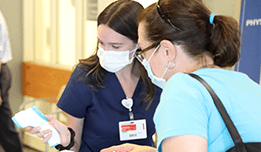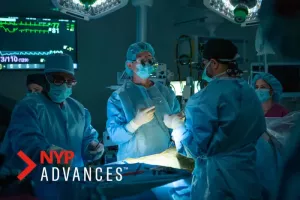FDA Approves New Drug Application (NDA) of PET Drug Produced By Weill Cornell Team, a Tri-State Area First
Researcher Helped Push Through Approval in Under 6 Months; Drug Is Approved for Diagnosing Cancer, Cardiovascular Disease, and Epilepsy
Aug 31, 2004
New York, NY
An innovative PET tracer drug manufactured at Weill Cornell Medical College received the U.S. Food and Drug Administration's stamp of approval this month for use in diagnosing tumors, cardiovascular problems, and centers of epileptic activity in the brain, using positron emission tomography (PET). The FDA's approval for Fludeoxyglucose F18 injection ([18F]FDG) is the second such approval in the country for this type of radiopharmaceutical application, and the first in the New York tri-state area.
Because the FDA is still working on guidelines regulating PET tracer drugs, they have so far not required FDA approval. For that reason, [18F]FDG is already used widely in PET Centers throughout the country. However, the new FDA approval means patients can now feel much safer each time it is used.
Weill Cornell has raised the bar for everyone else in the quality of their radio pharmaceuticals and in terms of patient safety, said Dr. Harry Lander,Assistant Dean for Research Administration at the Weill Medical College of Cornell University.
Dr. Lander credits the pro-active efforts of Weill Cornell researcher Dr. Shankar Vallabhajosula in getting the NDA approved for [18F]FDG in just six months, in a process where most drugs take years to get approved. That effort was made even more daunting by the fact that, under federal rules enacted in 1997, formal FDA approval of new PET drugs ground to a halt as agency officials worked on guidelines for this special class of compounds.
Industry was waiting for the FDA to act, said Dr. Vallabhajosula, Professor of Radiochemistry in Radiology in the Division of Nuclear Medicine at Weill Cornell Medical College, and Attending Radiologist at NewYork-Presbyterian Hospital/Weill Cornell Medical Center. But I went to the FDA and I said 'Why do I have to wait?' As soon as officials gave him the green light, Dr. Vallabhajosula submitted the NDA for [18F]FDG in March 2004.
Experts at the FDA acted quickly. They reviewed the application and then visited Weill Cornell, where they were impressed by the high standards at the facility. Based on available evidence, on August 5, the FDA panel approved [18F]FDG for use in diagnosing cardiovascular disease, tumors, and foci of epileptic seizures in the brain.
[18F]FDG is a glucose analog, a chemical mimic of glucose, the body's prime energy source. Tumors, because their cells are dividing so rapidly, need energy, and that energy is glucose, Dr. Vallabhajosula explained. The major fuel for brain activity including bursts of energy associated with epileptic seizures comes from glucose, as well. And while the heart usually relies on fatty acids for its fuel, it can turn to glucose when things go wrong. All three of these mechanisms mean glucose is a great vehicle for PET diagnoses.
[18F]FDG resembles glucose in all but one atom, he added, so as cells cry out for glucose, they pull the drug toward them. But that one-atom difference means [18F]FDG goes unused, piling up around centers of high glucose activity. It's working like a probe, showing where glucose metabolism has increased or decreased, Dr. Vallabhajosula said. On PET scans, this allows doctors to get a detailed outline of the location and internal structure of tumors, cardiovascular abnormalities, and other trouble spots.
There are now over several hundred PET Centers out there using FDG, with over 400,000 patients benefiting from this drug every year, said the Weill Cornell researcher.
FDA approval of [18F]FDG may soon benefit those hoping for concrete FDA approval guidelines on radiopharmaceuticals, too. The FDA encouraged Weill Cornell's NDA application, and may use it as a model to encourage other institutions around the country to follow, Dr. Lander pointed out.
Indeed, other FDG-type drugs are in the pipeline, including those currently under development at Weill Cornell. In the meantime, the [18F]FDG produced at Weill Cornell will be used at the Medical College's PET research facility, the Citigroup Biomedical Imaging Center (CBIC), and at NewYork-Presbyterian Hospital by Dr. Stanley J. Goldsmith (Director of Nuclear Medicine and PET) and his colleagues.
This really establishes the radiochemistry group here, said Dr. Vallabhajosula. We're a very new PET Center; we don't have a lot of history. But now everyone in the country working with FDG knows about this unique FDA approval. It really puts us on the map.



